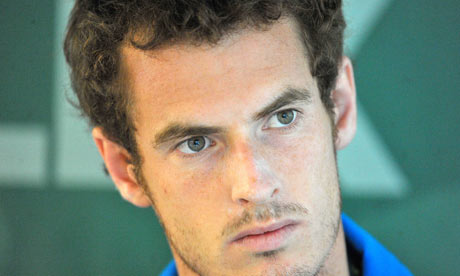 Last year, Andy Murray might have felt he was making progress on clay. Always his weakest surface since turning pro, Murray’s problems were compounded this year by his loss in the finals of the Australian Open. While his straight set drubbing by Federer was not entirely unexpected, what was unexpected was how the loss affected Murray.
Last year, Andy Murray might have felt he was making progress on clay. Always his weakest surface since turning pro, Murray’s problems were compounded this year by his loss in the finals of the Australian Open. While his straight set drubbing by Federer was not entirely unexpected, what was unexpected was how the loss affected Murray.
Murray took nearly two weeks off without hitting a ball. He skipped Marseille. He claimed he was only practicing in Dubai. In Indian Wells, he did respectable, but still lost to Robin Soderling in the quarterfinals. Then, he surprisingly lost to Mardy Fish in Miami in the 2nd round. He and Novak Djokovic’s career path seemed interwined with Djokovic seemingly rudderless after early losses in Indian Wells and Miami.
Murray decided to take a wildcard to play in Monte Carlo after originally planning to skip the event, even though he was defending a semifinal appearance from last year. Kohlschreiber is a tough clay courter. He’s given Roger Federer all he can handle in the Slmas.
Murray’s big problem playing clay is the lack of a good kill shot. Murray relies on change of pace to win points, confusing his opponents into unexpected errors. But he’s been on the tour a while, and players begin to pick up on your patterns and learn how to address them. Murray isn’t the kind of player that looks to hit big shots, and clay is one of those surfaces that increasingly, you need to look to put away the ball.
At one point, clay court play meant outlasting your opponent. When winners were rare, the clay forced you to play long rallies and wait for the error. Murray would not have been great in that era. He lacks the steadiness to outlast grizzled clay court veterans. It’s tough when you aren’t steadier than your opponents (Roddick stays competitive partly because he is steady), nor when you can’t overpower them. On clay, you need both these days. You must be patient, but you must have the ability to hit the big shots to pressure your opponent and both these qualities are not something Murray has in spades.
Murray was trying to use high backhand loopers to make life tough for Kohlschreiber, but he was making a few too many errors. It didn’t help that Murray’s first serve percentage was under 40%, that he won only 60% of his first serve and 40% of his second, that he didn’t even get to break point on Kohlschreiber’s serve. If clay teaches a lesson to Murray, it’s that he needs to strike and not wait for errors. He has to constantly pressure his opponents. The revolution that changed tennis has affected clay too. It’s made players into aggressive baseliners. Strokes that Murray made on clay would have been difficult on hard courts, but they are retreivable on clay, and because Murray isn’t a great topspin player (he can hit them, but lacks consistency to hit the bigger shots), he makes errors.
Murray loses to Kohlschreiber, 6-2, 6-1.
By contrast, Rafael Nadal dropped only 1 game against Thiemo de Bakker and Djokovic dropped only 5 games to Florent Serra, admittedly, both opponents were weaker than Kohlschreiber. Murray was going to have a tough match either way (Bellucci was his other possible opponent). Murray still has more soul-searching to do.



![[Paris] Djokovic finishes post US Open tournaments undefeated with win over Ferrer](https://www.essentialtennis.com/wp-content/uploads/2013/11/20131103nole-500x383.jpg)
![[Shanghai] Djokovic wins the China double, adding Shanghai title to Beijing](https://www.essentialtennis.com/wp-content/uploads/2013/10/20131013nole-500x383.jpg)
![[Shanghai, SF] del Potro upsets Nadal in awesome display of power](https://www.essentialtennis.com/wp-content/uploads/2013/10/20131012delpo-500x383.jpg)

![[Cincinnati] Nadal wins 26th Masters 1000 title with win over Isner 7-6, 7-6](https://www.essentialtennis.com/wp-content/uploads/2013/08/20130818rafa-500x383.jpg)